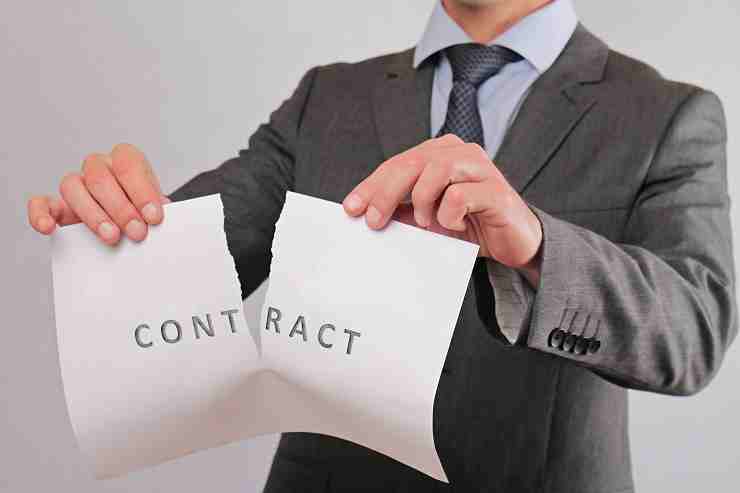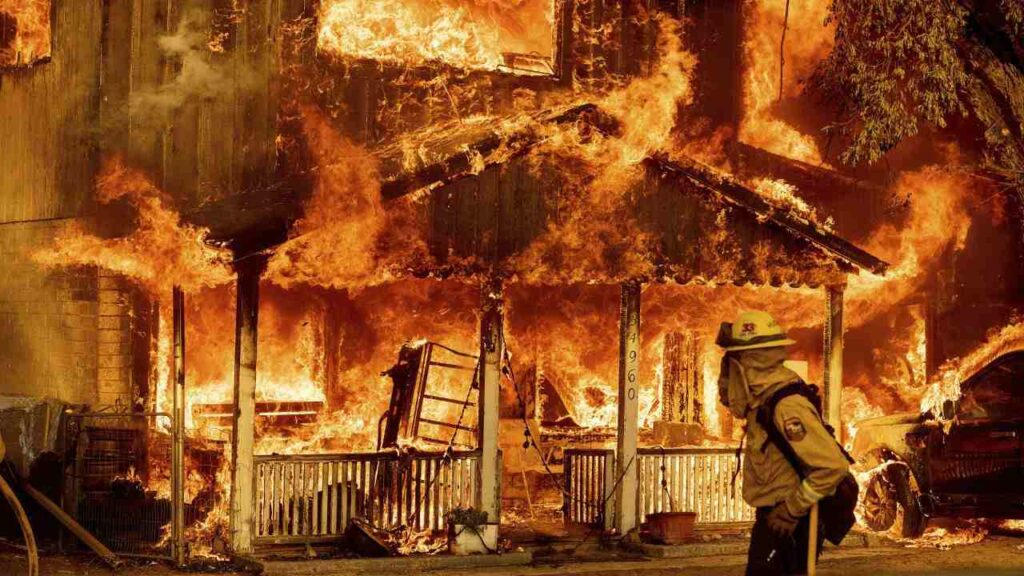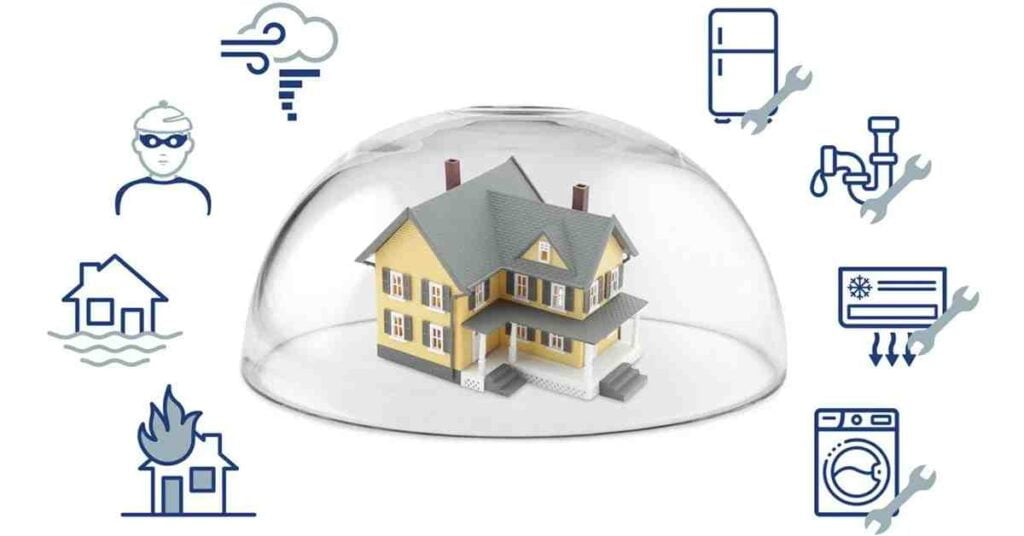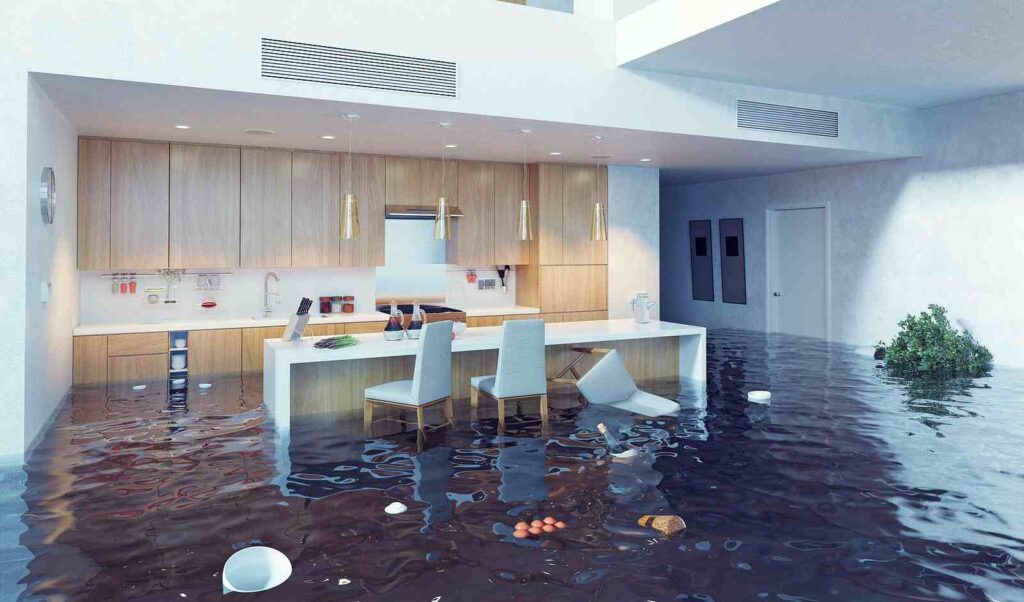Home insurance is often viewed as a necessary expense for homeowners, providing a safety net in case of unforeseen incidents. But what happens when that safety net is removed? What if you find yourself unable to continue paying your home insurance premiums, or choose to stop for other reasons? The consequences can be far-reaching and more severe than you might think. In this article, we’ll delve into the repercussions of stopping home insurance payments, from policy lapses and unprotected homes to potential legal issues and difficulties in obtaining future coverage. Whether you’re a homeowner considering this decision or simply curious about the topic, read on to understand the risks and implications involved.
Policy Lapse

A policy lapse occurs when a policyholder stops paying premiums on their insurance policy. When this happens, the insurance company is no longer obligated to pay out for claims made under that policy. Here’s a brief explanation:
- Grace Period: After missing a premium payment, most insurance companies provide a grace period (usually 30 days) during which the policyholder can make the payment without any penalty.
- Policy Cancellation: If the payment is not made within the grace period, the policy is considered to have lapsed, and the coverage is cancelled.
- Reinstatement: Some insurance companies may offer the option to reinstate the policy after it has lapsed. This usually involves paying all of the outstanding premiums, possibly with interest, and may require a new medical examination or proof of insurability.
- Loss of Benefits: Once a policy lapses, the policyholder loses all the benefits of the policy. If a claim is made after the policy has lapsed, the insurance company will not cover the claim.
Remember, it’s important to maintain regular premium payments to avoid a policy lapse and ensure continuous coverage. If you’re facing financial difficulties, it’s better to speak with your insurance provider to explore options rather than letting your policy lapse. They may be able to adjust your coverage or payment plan to something more affordable.
Legal Requirements and Mortgage Lenders
When discussing the legal requirements and the role of mortgage lenders in relation to home insurance, it’s important to delve into the following aspects:
Legal Requirements
Many jurisdictions have legal requirements mandating homeowners to maintain adequate insurance coverage on their properties. While specific laws vary by location, the underlying principle is to protect homeowners, lenders, and even neighboring properties from potential financial losses resulting from damage, liability claims, or other unforeseen events.
For example, in some states or regions, homeowners may be required to have certain types of insurance coverage, such as basic property insurance or coverage for specific natural disasters prevalent in the area, like hurricanes or earthquakes. Failure to comply with these legal requirements could result in penalties, fines, or other legal consequences.
Additionally, homeowners associations (HOAs) or condominium associations may also have insurance requirements outlined in their bylaws or governing documents. These requirements are typically in place to protect the collective interests of the community and ensure that all members contribute to the overall insurance coverage for shared structures and common areas.
Role of Mortgage Lenders
Mortgage lenders often impose insurance obligations on homeowners as part of the mortgage agreement. When a homeowner takes out a mortgage to purchase a property, the lender has a financial stake in ensuring the property is adequately protected against potential risks.
As a condition of the mortgage agreement, lenders typically require homeowners to maintain home insurance coverage throughout the life of the loan. This requirement serves to protect the lender’s investment in the property by ensuring that funds are available to repair or rebuild the home in the event of damage or destruction.
Lenders may also require homeowners to name them as additional insured parties or mortgagees on the insurance policy. This means that in the event of a claim, the insurance proceeds would be payable to both the homeowner and the lender, ensuring that the funds are used to repair or rebuild the property as intended.
If a homeowner fails to maintain insurance coverage as required by the mortgage agreement, the lender may take action to protect its interests. This could include purchasing insurance coverage on behalf of the homeowner (known as force-placed insurance) and adding the premium costs to the homeowner’s mortgage payments. In extreme cases, the lender may even declare the homeowner in default of the mortgage agreement, which could lead to foreclosure proceedings.
Overall, it’s important for homeowners to understand both the legal requirements and the obligations imposed by mortgage lenders regarding home insurance coverage. Failing to comply with these requirements could have serious financial and legal consequences, underscoring the importance of maintaining adequate insurance protection for their homes.
Risk Exposure

When discussing the risk exposure associated with stopping payment on home insurance, it’s crucial to delve into the various perils and scenarios that could leave homeowners vulnerable. Here are some key points to cover:
- Property Damage: Without home insurance, homeowners face significant financial risk in the event of property damage. This includes damage caused by natural disasters such as hurricanes, earthquakes, floods, or tornadoes, as well as fire, vandalism, or accidents like burst pipes.
- Personal Belongings: Home insurance typically covers personal belongings inside the home, including furniture, electronics, clothing, and appliances. Without coverage, homeowners would need to replace these items out of pocket if they were damaged, destroyed, or stolen.
- Liability Claims: Home insurance also provides liability coverage, protecting homeowners from financial responsibility if someone is injured on their property or if they accidentally cause damage to someone else’s property. Without this coverage, homeowners could face costly lawsuits and legal fees.
- Additional Living Expenses: In the event that a home becomes uninhabitable due to covered damage, home insurance often provides coverage for temporary living expenses, such as hotel bills or rental costs. Without insurance, homeowners would need to cover these expenses themselves while their home is being repaired or rebuilt.
- Mortgage Default: Many mortgage lenders require homeowners to maintain insurance coverage as a condition of the loan agreement. If homeowners fail to keep their insurance policy active, they could be in breach of their mortgage contract, which could lead to foreclosure proceedings.
- Financial Ruin: The financial consequences of not having home insurance can be severe. Homeowners may find themselves facing overwhelming repair or replacement costs, legal fees, and even the loss of their home if they cannot afford to cover these expenses out of pocket.
- Unforeseen Circumstances: Even if homeowners believe they live in a low-risk area or have never experienced a significant loss before, unforeseen circumstances can arise at any time. It only takes one catastrophic event to result in substantial financial loss without the protection of home insurance.
- Peace of Mind: Beyond the financial risks, home insurance provides homeowners with peace of mind, knowing that they are protected against a wide range of potential hazards. Without insurance, homeowners may constantly worry about the possibility of a disaster or liability claim bankrupting them.
By highlighting these risks, homeowners can better understand the importance of maintaining active home insurance coverage to protect themselves, their families, and their financial well-being.
Reinstating Coverage

Reinstating coverage refers to the process of restoring a lapsed or canceled insurance policy to active status. When a homeowner’s insurance policy lapses or is canceled due to missed payments or other reasons, they may need to go through the reinstatement process to regain coverage. Here’s a process of how reinstating coverage typically works:
- Contact the Insurance Provider: The first step in reinstating coverage is to contact the homeowner’s insurance provider as soon as possible after the policy has lapsed or been canceled. This can usually be done by phone or online through the insurer’s website.
- Review the Policy Status: The insurance company will assess the status of the policy to determine if it is eligible for reinstatement. Factors that may affect eligibility include the length of time since the policy lapsed, the reason for the lapse, and any outstanding payments or fees.
- Address Outstanding Payments: If the policy lapsed due to missed payments, the homeowner will typically need to pay any outstanding premiums, fees, or charges to bring the policy up to date. This may include late fees or penalties assessed by the insurer.
- Update Information: The homeowner may need to provide updated information to the insurance company, such as changes in the property’s condition or occupancy status, to ensure that the policy reflects accurate details.
- Undergo Underwriting Review: In some cases, the insurance company may require the homeowner to undergo a new underwriting review before reinstating coverage. This may involve reassessing the property’s risk factors and determining if any changes to the policy terms or coverage limits are necessary.
- Pay Reinstatement Fees: Depending on the insurer’s policies, there may be reinstatement fees associated with restoring coverage. These fees help cover administrative costs incurred by the insurer in processing the reinstatement.
- Receive Confirmation of Reinstatement: Once the reinstatement process is complete and any required payments or steps have been taken, the homeowner will receive confirmation that their insurance coverage has been reinstated. This confirmation may include updated policy documents or a new insurance ID card.
- Resuming Coverage: With the policy reinstated, the homeowner can once again benefit from the protections provided by their home insurance policy. It’s essential to maintain timely payments going forward to avoid another lapse in coverage.
- New Policy: If reinstatement isn’t possible, you may need to apply for a new policy. This could involve a new application process, including a new home inspection and potentially higher premiums.
Homeowners need to be proactive in addressing any lapses or cancellations in their insurance coverage to avoid gaps in protection and potential financial risks. Reinstating coverage allows homeowners to regain the peace of mind and financial security that comes with having adequate insurance protection for their homes.
Alternative Coverage
In discussing alternative coverage options for homeowners who may be struggling to afford traditional home insurance or facing challenges with their current policy, it’s essential to explore various alternatives that may suit their needs. Here are some alternative coverage options to consider:
- Surplus Lines Insurance: This type of insurance is designed for high-risk properties that traditional insurers won’t cover. While typically more expensive, it can be a viable option for those who can’t find coverage elsewhere.
- Fair Access to Insurance Requirements (FAIR) Plans: These state-run programs provide insurance for homeowners who can’t get coverage due to being in a high-risk area. Coverage and eligibility vary by state.
- Home Warranty: While not a replacement for home insurance, a home warranty can cover the repair or replacement of major home systems and appliances. This can be a cost-effective alternative for some homeowners.
- Self-Insurance: In this scenario, homeowners set aside money each month in a dedicated savings account to cover potential losses. This requires discipline and a good understanding of the potential risks.
- Peer-to-Peer (P2P) Insurance: This is a newer model where a group of people pool their resources to cover losses. It can be a more affordable option, but it’s not as widely available and may not offer as comprehensive coverage.
- Catastrophe Insurance: This type of insurance covers specific disasters like floods or earthquakes. It can be a good supplement to a basic policy, especially for those in high-risk areas.
- Mutual Aid Societies: These are groups where members pool their resources to help each other in times of need. They can be a good option for those who can’t afford traditional insurance, but they may not offer the same level of coverage.
- Cooperative Insurance: In this model, policyholders are also the insurers. They pool their premiums together to cover losses. Any profits are returned to the policyholders in the form of dividends or reduced future premiums.
- Microinsurance: This is a type of insurance designed for low-income individuals who can’t afford typical insurance premiums. It usually provides coverage for specific perils and has lower coverage limits.
- Parametric Insurance: This type of insurance pays out a set amount when a specific event occurs, such as an earthquake of a certain magnitude. It can be a good option for those in disaster-prone areas.
Do I Need to Tell Home Insurance About My Dog?
Remember, while these alternatives can provide some level of protection, they may not offer the comprehensive coverage of a traditional home insurance policy. It’s important to carefully consider your needs and consult with an insurance professional before choosing an alternative coverage option.
Tips for Managing Home Insurance Costs
Here are some succinct tips for managing home insurance costs:
- Shop Around: Compare quotes from multiple insurance providers to ensure you’re getting the best rate for your coverage needs.
- Increase Deductibles: Consider raising your deductible, but make sure you can afford to pay it out of pocket in the event of a claim.
- Bundle Policies: Many insurers offer discounts for bundling home and auto insurance policies with the same provider.
- Improve Home Security: Installing security systems, smoke detectors, and deadbolts can reduce the risk of theft and fire, potentially lowering your premiums.
- Maintain Good Credit: A strong credit score can often lead to lower insurance premiums, so make sure to maintain good credit habits.
- Review Coverage Regularly: Periodically reassess your coverage needs to ensure you’re not paying for more coverage than necessary.
- Avoid Making Small Claims: Paying for minor repairs out of pocket instead of filing a claim can prevent your premiums from increasing.
- Consider Discounts: Inquire about available discounts for factors like being a non-smoker, retired, or having a newer home.
- Stay Loyal: Some insurers offer loyalty discounts for customers who have been with them for a certain period, so inquire about loyalty rewards.
- Seek Professional Advice: Consult with an insurance agent or broker who can help you find the most cost-effective coverage options tailored to your needs.
Implementing these tips can help you manage your home insurance costs without sacrificing essential coverage.
FAQs
Q 1. What is a grace period in home insurance?
Ans. A grace period in home insurance is a set amount of time after the payment due date during which policyholders can make a premium payment without coverage lapses or penalties.
Q 2. How can I prevent my home insurance policy from lapsing?
Ans. To prevent your home insurance policy from lapsing, ensure you pay your premiums on time. If you’re having trouble affording your premiums, contact your insurer to discuss possible solutions such as adjusting your coverage or payment plan.
Q 3. What are the consequences of having a lapse in home insurance on my record?
Ans. Having a lapse in home insurance on your record can lead to higher premiums in the future. It can also make it more difficult to obtain insurance, as companies may view you as a high-risk client.
Q 4. Can I get home insurance again after a policy lapse?
Ans. Yes, you can get home insurance again after a policy lapse, but it may be more expensive. Some insurers may require a larger down payment or proof that you’ve repaired any damage that occurred while the property was uninsured.
Q 5. What happens if my home is damaged when my policy has lapsed?
Ans. If your home is damaged when your policy has lapsed, you will be responsible for all repair costs. The insurance company will not cover any claims made during a lapse in coverage.
Q 6. What is surplus lines insurance?
Ans. Surplus lines insurance is a type of insurance designed for high-risk properties that traditional insurers won’t cover. It’s typically more expensive but can be a viable option for those who can’t find coverage elsewhere.
Q 7. What is a FAIR Plan in home insurance?
Ans. A FAIR (Fair Access to Insurance Requirements) Plan is a state-mandated insurance association that provides home insurance to those who can’t get coverage due to being in a high-risk area.
Q 8. What is the difference between home insurance and a home warranty?
Ans. Home insurance covers damage to your home and personal property due to events like fire, theft, or storms, as well as liability coverage. A home warranty, on the other hand, covers the repair or replacement of specific home systems and appliances due to wear and tear.
Conclusion
In conclusion, while stopping home insurance payments may seem like a short-term financial relief, the long-term consequences can be severe and far-reaching. From policy lapses and unprotected homes to potential legal issues and difficulties in obtaining future coverage, the risks are significant.
However, there are alternatives and solutions available for homeowners who are struggling to afford their premiums. It’s crucial to explore these options and seek professional advice before making such a decision. Remember, home insurance is not just about protecting your property; it’s about securing peace of mind for you and your family. So, before you consider stopping your home insurance payments, think about the potential consequences and explore all available options.

Join Shubham, a finance enthusiast with a mission to empower readers with the knowledge and tools to achieve financial freedom. Discover smart financial advice and unlock your financial potential.


